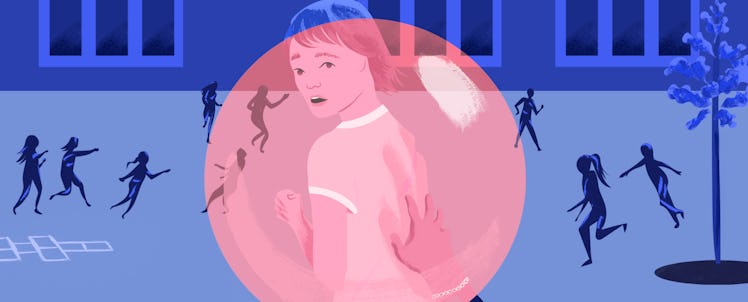As Schools Ban Kids From Playing Tag, Psychologists Ask Why
Experts agree that kids love tag because the game lets them pretend to be predators. Is that problematic? Maybe not.

School districts in Alabama, California, South Carolina, and Washington have banned playing tag, explaining to parents that the classic recess game undermines the lessons about consent and boundaries being taught to young students. Whether these bans represent overreach or educational consistency, they raise a question about whether or not the game, in which children chase peers and touch peers who don’t want to be touched, has aged well. The virtues of the game are clear: Everyone knows how to play it and there’s no set-up involved. Whether the upside trumps potential rhetorical or educational hazards is, for the moment, up for debate — but, for psychologists, the jury isn’t really out.
“The thrill of tag is biological and evolutionary and simulates a predator-prey dynamic, with the person being chased is prey,” explains psychologist Rachel Tomlinson. “You can also see this behavior in many animals, with young animals in the species playing tag to practice this skill of retreating from a predator to keep safe.”
As a result, when kids chase each other they excite their limbic system, the reward center of the brain, receives a rush of dopamine, the so-called happiness hormone. Given that fact and the ease of tag as social play, it makes sense that the game exists as a sort of playground default. What’s interesting about the biological incentive underpinning the natural inclination to chase is that tag does offer kids a natural high in exchange for them treating their friends like prey.
This is where educators grow concerned and where psychologist like Tomlinson feel compelled to step in and provide a context for the conversation about tag that has less to do with #MeToo and more to do with childhood. Tomlinson argues that despite the fact that it was never intended to teach emotional intelligence, tag is actually a good way for kids to learn about boundaries — depending, of course, on how the game is being played.
“This is a line all children need to learn about at some point and games like this can be a good opportunity,” she says.
Tag teaches kids about consent at the outset, when children individually agree to participate in the game—or not. When kids understand that all players can opt out at any time, this models consent quite well. When that understanding and understandings about how physical the game is likely to get are not made explicit, kids wind up operating in a grey zone. It’s easy for adults to solve this problem, but the unique issue with tag is that it’s such an easy and natural game to play that adults are not always at hand or don’t necessarily insert themselves as referees. (Again, this can be a very good thing for kids, but also leaves some room for potential misunderstandings.)
“Kids are quite good at this. Usually when the dynamic changes they quit or opt out when they no longer like it,” says family therapist Carrie Krawiec.
Unfortunately, many adults also struggle to respect boundaries and interfere unnecessarily with children engaged in developmentally appropriate behaviors. There are definitely children’s games that enable unhealthy boundaries and teach the wrong lessons, Krawiec acknowledges, but they tend to be easy to spot. Eating competitions are bad. Musical chairs is a bit uncomfortable. The “Kissing Game” clearly teaches awful lessons about consent.
Experts largely agree that as long as adults have spoken to kids about setting and observing boundaries, tag doesn’t represent much of a threat. Creating a predator-prey dynamic sounds like a bad idea on paper, but that’s kind of the point. Many games are popular precisely because they create safe spaces for behaviors that are normally frowned up. And it’s not as though tag encourages broadly predatory behavior. There’s no rush in tagging someone who isn’t running away. So, on that level, it’s essentially self-policing. According to psychotherapist Jim McNulty, children who are having a good time and know when to stop shouldn’t have any trouble handling being “it.”
“We want children to learn from a young age to explore the boundaries for themselves in a controlled environment where they cannot get hurt or hurt others.” he adds. “I don’t want to paint the picture that you’re creating little dopamine-driven predators by allowing your children to play. I’m more trying to explain the biological and psychological reasons children enjoy games like tag.”
It’s important to note that tag doesn’t just get banned for activist reasons or because of optics. Children have a tendency to get rough while playing the game. It becomes a forum for testing boundaries. And that can go south in a hurry if there isn’t an adult nearby to intervene and correct bad behaviors. There is also the potential for exclusion. Kids who are too aggressive eventually experience a social exclusion similar to being “it.” The game ceases to be fun.
“Children are very perceptive to social rules. We all had that one kid in the playground who played too rough as a child,” explains McNulty. “Eventually they were distanced from the group at which time they usually learned it doesn’t feel good to be isolated.”
Adults are responsible for making sure no one gets hurt in the process, but allowing kids to negotiate these matters amongst themselves in more beneficial for them in the long-term, McNulty and Tomlinson agree.
This article was originally published on